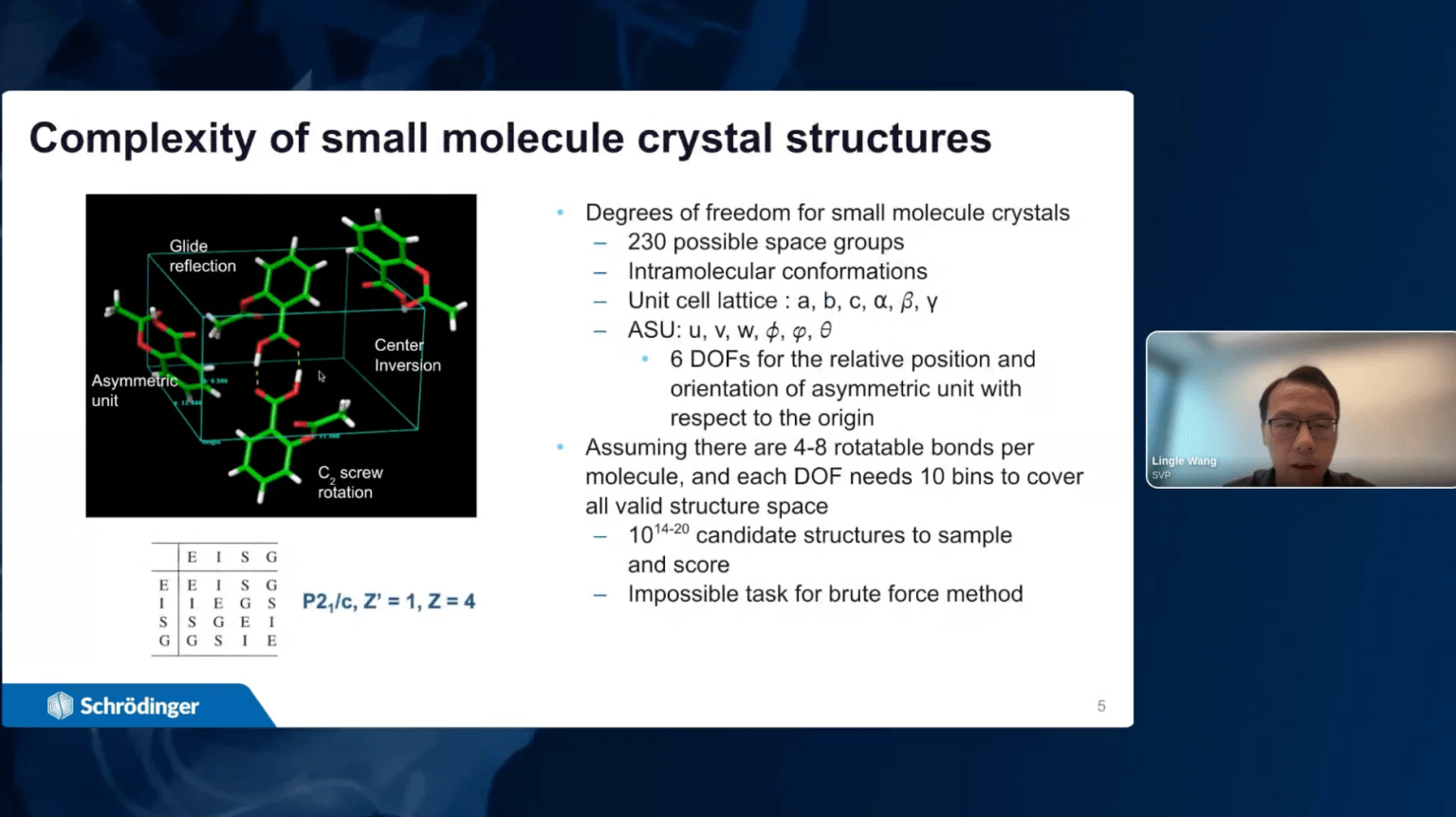
OCT 23, 2024
Crystal structure prediction workflow for small molecule drug formulation
Abstract:
Early assessment of crystal polymorphism and thermodynamic solubility continues to be elusive for drug discovery and development despite its critical importance, especially for the ever-increasing fraction of poorly soluble drug candidates. We have developed a crystal structure prediction (CSP) method that combines a novel systematic crystal packing search algorithm and a hierarchical energy ranking protocol to predict crystal polymorphs. This is complemented by a free energy perturbation (FEP+) approach for computing thermodynamic aqueous solubility. The high accuracy, reliability, and efficiency of our CSP and FEP+ methods with large scale validations is designed to support polymorph screening and solubility prediction in drug substance and drug product development processes.
Webinar Highlights:
- Introduction to Schrödinger’s Crystal Structure Prediction platform and validation on a large and diverse dataset of 65 drug-like molecules with 135 experimentally found polymorphic forms
- Overview of physics-based free energy perturbation (FEP+) approach for computing thermodynamic aqueous solubility and assessment across a diverse chemical space spanning several pharmaceutically relevant compounds
Our Speaker

Lingle Wang
Senior Vice President, Schrödinger
Lingle Wang, senior vice president, scientific development, joined Schrödinger in 2012. He is responsible for advancing Schrödinger’s physics-based computational drug discovery platform. He obtained his Ph.D. from Columbia University working with Professors Richard Friesner and Bruce Berne on methods to quantify the role of water molecules in protein-ligand binding, enhanced sampling in biomolecular simulations and free energy calculations. Lingle has published extensively in the areas of free energy methods development and applications in drug discovery.